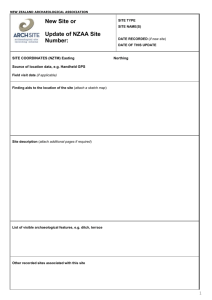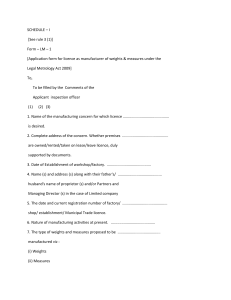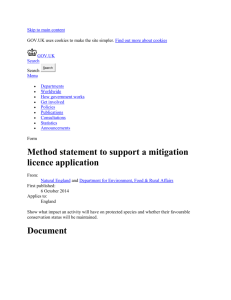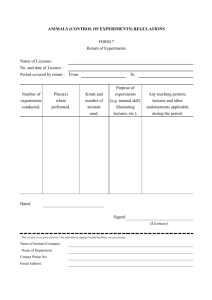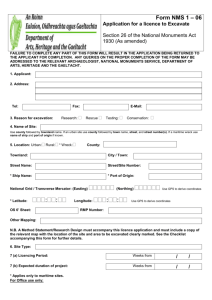Guidance for Exporters of Archaeological Objects
advertisement
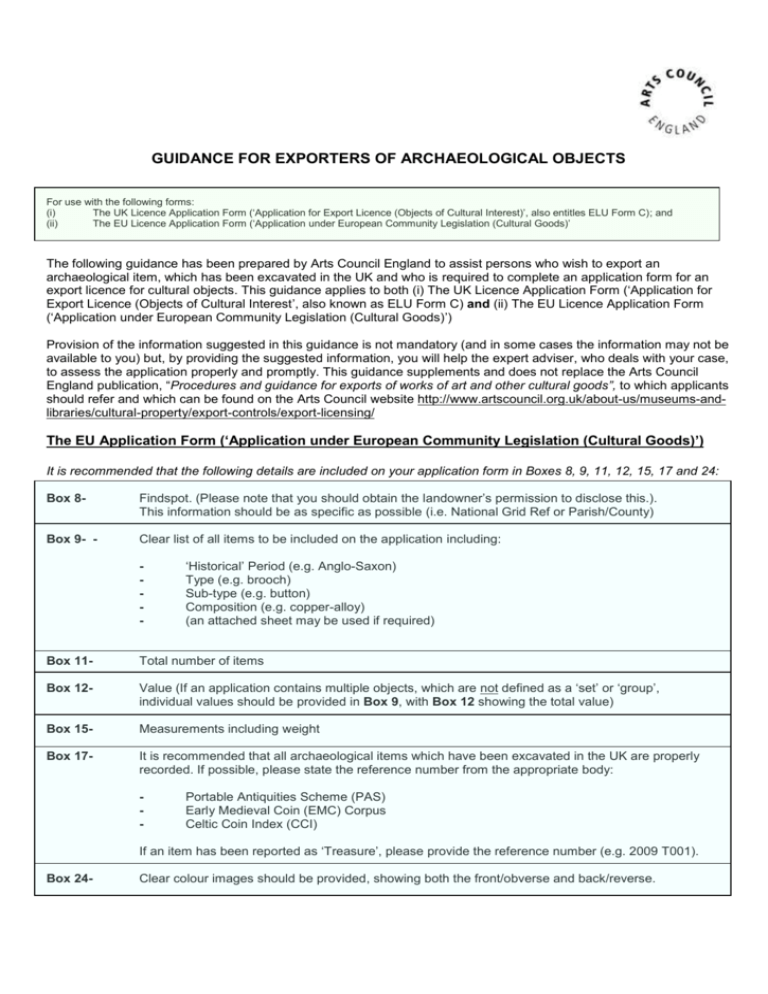
GUIDANCE FOR EXPORTERS OF ARCHAEOLOGICAL OBJECTS For use with the following forms: (i) The UK Licence Application Form (‘Application for Export Licence (Objects of Cultural Interest)’, also entitles ELU Form C); and (ii) The EU Licence Application Form (‘Application under European Community Legislation (Cultural Goods)’ The following guidance has been prepared by Arts Council England to assist persons who wish to export an archaeological item, which has been excavated in the UK and who is required to complete an application form for an export licence for cultural objects. This guidance applies to both (i) The UK Licence Application Form (‘Application for Export Licence (Objects of Cultural Interest’, also known as ELU Form C) and (ii) The EU Licence Application Form (‘Application under European Community Legislation (Cultural Goods)’) Provision of the information suggested in this guidance is not mandatory (and in some cases the information may not be available to you) but, by providing the suggested information, you will help the expert adviser, who deals with your case, to assess the application properly and promptly. This guidance supplements and does not replace the Arts Council England publication, “Procedures and guidance for exports of works of art and other cultural goods”, to which applicants should refer and which can be found on the Arts Council website http://www.artscouncil.org.uk/about-us/museums-andlibraries/cultural-property/export-controls/export-licensing/ The EU Application Form (‘Application under European Community Legislation (Cultural Goods)’) It is recommended that the following details are included on your application form in Boxes 8, 9, 11, 12, 15, 17 and 24: Box 8- Findspot. (Please note that you should obtain the landowner’s permission to disclose this.). This information should be as specific as possible (i.e. National Grid Ref or Parish/County) Box 9- - Clear list of all items to be included on the application including: - ‘Historical’ Period (e.g. Anglo-Saxon) Type (e.g. brooch) Sub-type (e.g. button) Composition (e.g. copper-alloy) (an attached sheet may be used if required) Box 11- Total number of items Box 12- Value (If an application contains multiple objects, which are not defined as a ‘set’ or ‘group’, individual values should be provided in Box 9, with Box 12 showing the total value) Box 15- Measurements including weight Box 17- It is recommended that all archaeological items which have been excavated in the UK are properly recorded. If possible, please state the reference number from the appropriate body: - Portable Antiquities Scheme (PAS) Early Medieval Coin (EMC) Corpus Celtic Coin Index (CCI) If an item has been reported as ‘Treasure’, please provide the reference number (e.g. 2009 T001). Box 24- Clear colour images should be provided, showing both the front/obverse and back/reverse. The UK Licence Application Form (‘Application for Export Licence (Objects of Cultural Interest)’, also known as ELU form C) The UK licence application form (ELU form C) is in a different format to the EU licence application form. It is recommended, however, that the same information described above is also provided on the UK application form. The information can be included in the table provided on page 3 of the form which requires a full description of goods to be exported. Further Information: Export licence applications for archaeological items are assessed against the Waverley criteria. The granting of an export licence does not guarantee that the applicant/consignee/owner has legal title to the object, or that the object is not tainted in any way. Applicants are advised to follow the Advice for People Buying Archaeological Objects from the United Kingdom (http://www.finds.org.uk/treasure/advice/adviceonbuying) published by the Portable Antiquities Scheme and refer to the Cultural Property Advice website (http://www.culturalpropertyadvice.gov.uk).

